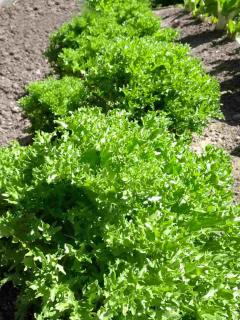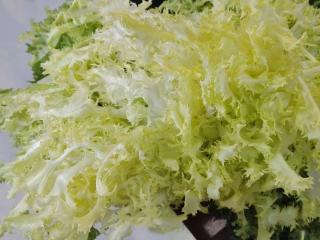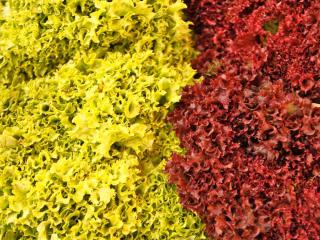

Curly endive is a salad green that is appreciated for its crispy fresh leaves, for the ease of its growing and its hardiness.
Key curly endive facts
Name – Cichorium endivia or latifolium
Family – Asteraceae
Type – annual
Height – 8 to 12 inches (20 to 30 cm)
Exposure – full sun, part sun
Soil: ordinary – Harvest: around 6 weeks after sowing
Sowing, planting, caring for it and harvesting will help you get great curly endive.
Curly endive is traditionally grown in summer and fall, but it can also be sown earlier for a harvest in spring.
It is sown directly in the plot in rows from February to October. Starting early is possible, but you’ll need to protect your seedlings from the cold with cold frames, garden cloches or tunnels.
 As for summer sowing, know that curly endive loves staying cool to develop well.
As for summer sowing, know that curly endive loves staying cool to develop well.
In all cases, thin sprouts down to one every 10 to 12 inches (25 to 30 cm) as soon as the first leaves appear.
Did you know that curly endive is perfectly suited to growing in pots? You’ll be able to savor it directly from your balcony or terrace.
If you wish to avoid the seedling stage, it is often possible to purchase your curly endive in a nursery pot, ready to plant.
You can plant them in the ground, either in your vegetable patch or in a garden box on a terrace or balcony.
Farmers like blanching curly endive to remove the bitterness from its leaves before eating. It turns leaves whiter.
 This step usually lasts about ten days.
This step usually lasts about ten days.It is best to blanch only as much as you need to harvest, because once blanched, curly endive won’t keep for very long.
Curly endive resists very well when the first colds hit, and will thus last deep into fall.
After having forced (blanched) them, harvest your curly endive by cutting them off at the root crown.
It is possible to harvest curly endive all season round, and even during winter.
As soon as the cold hits, protect your seedlings and plants with a small greenhouse, a tunnel, or any other device that will help your curly endive grow even though temperatures are below freezing, providing as much light as possible.
 A sub-species of endive, as is escarole, curly endive (also called frisée) is rather easy to grow. Curly endive doesn’t require much care during its entire growth phase, except for light regular watering.
A sub-species of endive, as is escarole, curly endive (also called frisée) is rather easy to grow. Curly endive doesn’t require much care during its entire growth phase, except for light regular watering.
An annual belonging to the Asteraceae family, curly endive doesn’t deliver very energy-laden nutrition, but contains high amounts of water and facilitates digestion.
There are also many trace elements, fibers, minerals and vitamins that our bodies require.
Stage curly endive sowing dates and varieties to produce curly endive almost all year long.